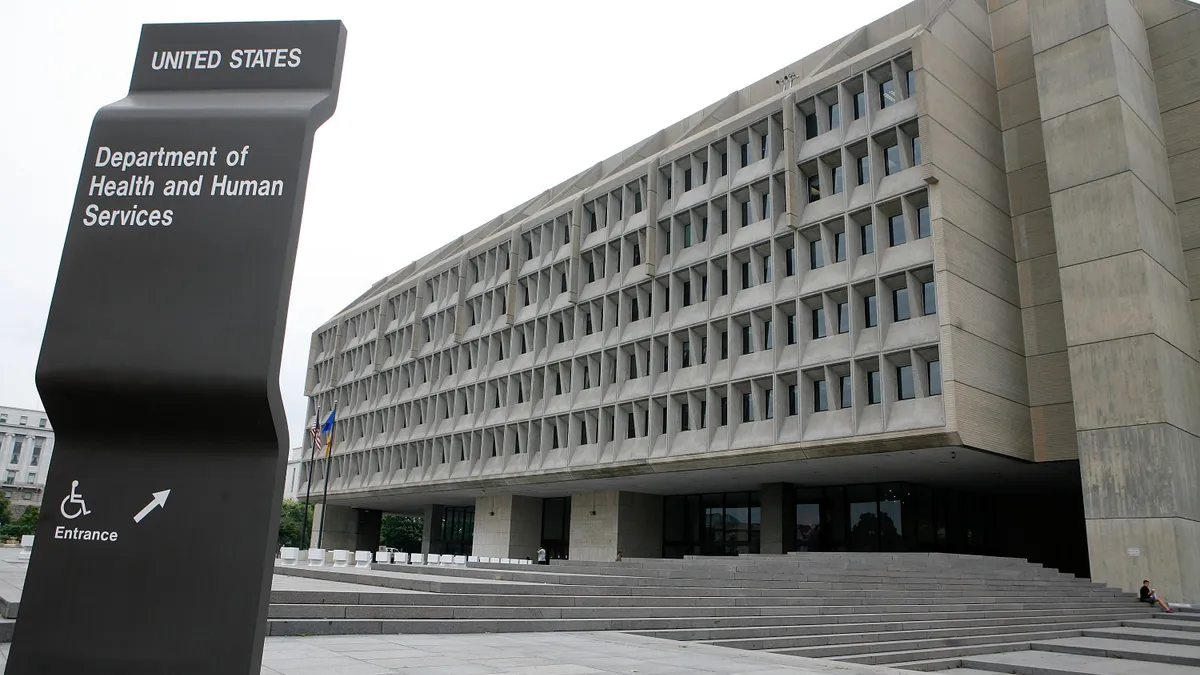Dive Brief:
- The Biden administration’s last word on the Medicare Advantage program gives health insurers something to look forward to in 2026. On Friday, regulators proposed a 4.3% hike on average to MA reimbursement, which would result in $21 billion in additional payments to insurers next year.
- The rule increases the average benchmark payment to MA plans by 2.2%, with insurers’ coding for member sicknesses making up the rest of the projected payment jump. It’s the largest increase to the MA benchmark in several years.
- The rule also completes the phase-in of changes to insurers’ coding practices that are unpopular with the industry. Still, the proposal could be tweaked by the Trump administration before it’s finalized in the spring.
Dive Insight:
The proposed MA payment rates are significantly more generous than market watchers expected, given the Biden administration’s past efforts to curb profiteering in the privatized Medicare program.
The 2.2% benchmark increase follows cuts of 0.2% for 2025 and 1.1% for 2024. Though, it’s worth noting that insurers received one of the largest ever payment increases in 2023.
A large portion of the suggested hike for 2026 is due to overall cost growth in Medicare, as measured by a metric called the effective growth rate. Regulators project an effective growth rate of more than 5.9% next year, blowing past cost growth in recent years.
That suggests government reimbursement could be catching up with higher utilization among the Medicare population that’s pressured payers’ earnings.
However, it’s unclear what changes president-elect Donald Trump’s healthcare agency may make to the rule. Trump’s presumptive nominee for CMS administrator, physician and television personality Mehmet Oz, has expressed support for privatized Medicare programs in the past, leading some analysts to believe the final payment update for plans could be much higher.
However, MA is currently under heavy scrutiny from politicians on both sides of the aisle for care denials and overpayments. Republicans on the Hill are also hunting for areas to reduce government spending to extend Trump’s promised tax cuts.
“This Biden Admin-produced rate is unexpectedly generous,” wrote Jefferies analyst David Windley in a note on Sunday. “Ironically, Biden’s farewell MA rate might make the incoming Administration uneasy because it’s too good (and expensive).”
Messaging in the rule’s release implies the Biden administration is concerned their successors might be interested in halting changes to how MA plans adjust for beneficiary risk.
The adjustments are meant to prevent upcoding, when insurers exaggerate their members’ health needs to get higher reimbursement from the government. They do so by making plans’ coding processes more accurate, including removing frequently gamed medical codes from the risk adjustment model.
The CMS first instituted the changes in 2023, but have rolled them out over three years to lessen the shock on insurers. In 2026, 100% of beneficiary risk scores will be calculated using the new model.
Pausing the phase-in will result in MA plans being paid $3.4 billion more than they should next year, regulators warned. Similarly, pausing a separate adjustment related to Medicare payments to hospitals for medical education would add $7 billion in costs with no commensurate improvement in the MA program, regulators said.
“The federal government is expected to spend $9.2 trillion over the next decade on MA payments to plans,” regulators wrote a fact sheet on the rule. “It is crucial these payments are accurate to prevent wasteful spending.”
The proposed rule also asks for feedback on changes to the star ratings program, which is meant to measure the quality of MA plans but has been criticized by watchdogs for inflating payments to insurers.
Regulators said they want to simplify which metrics are factored into the valuable quality scores. That includes potentially retiring measures with consistently high results — including one measuring plans’ call centers ability to communicate in foreign languages that’s been at the center of recent lawsuits against the agency.
Comments on the proposed rule are open through Feb. 10. The Trump administration will have until April 7 to finalize the rule.
Stocks in major MA payers, including UnitedHealth and Humana, jumped aftermarket Friday following the rule’s release. A payment hike would be a boon for insurers, which saw the profitability of their MA businesses shrink last year as seniors in the privatized Medicare plans used more medical care than expected and reimbursement fell.
The CMS maintains premiums and benefits, including the supplemental benefits so popular with seniors, stayed stable for 2025. However, major MA carriers retreated from underperforming markets and slashed benefits for this year in order to increase their margins, leading the average value of general enrollment MA plans to fall 6%, according to a report from actuarial firm Milliman.
Insurers are also struggling amid widespread discontent with business practices, which came to the fore with the killing of UnitedHealthcare CEO Brian Thompson in December. The nature of Thompson’s death has also sparked concerns about executive safety that likely contributed to major insurers pulling out of the J.P. Morgan healthcare conference in San Francisco this week.
Despite being originally scheduled to present, insurers Cigna and Centene were not on the final schedule released Sunday.















